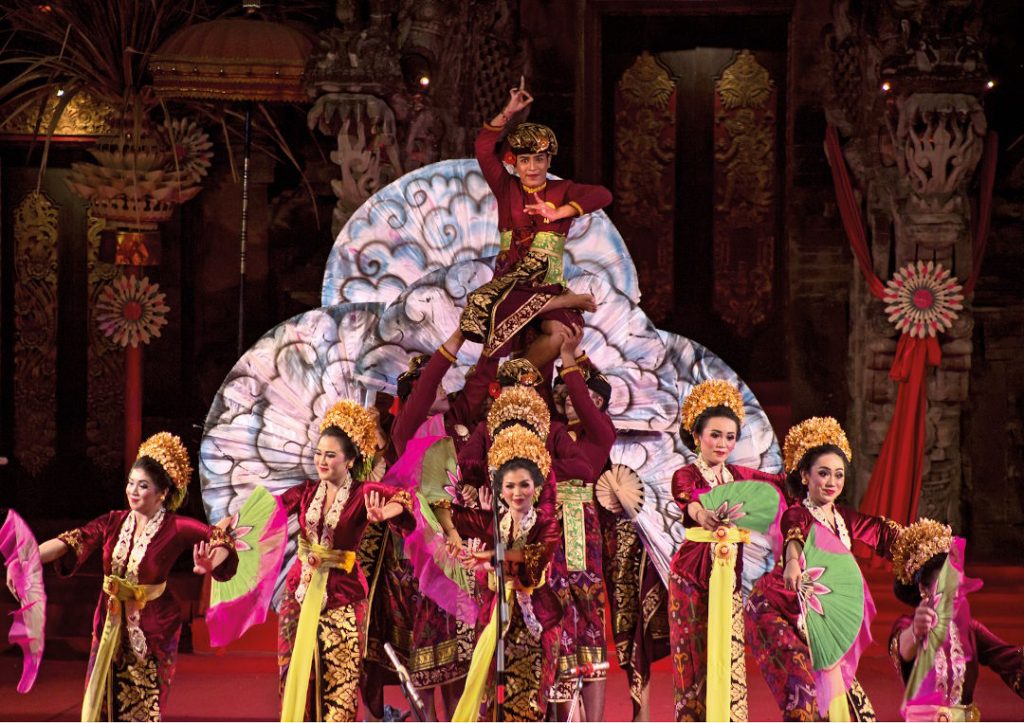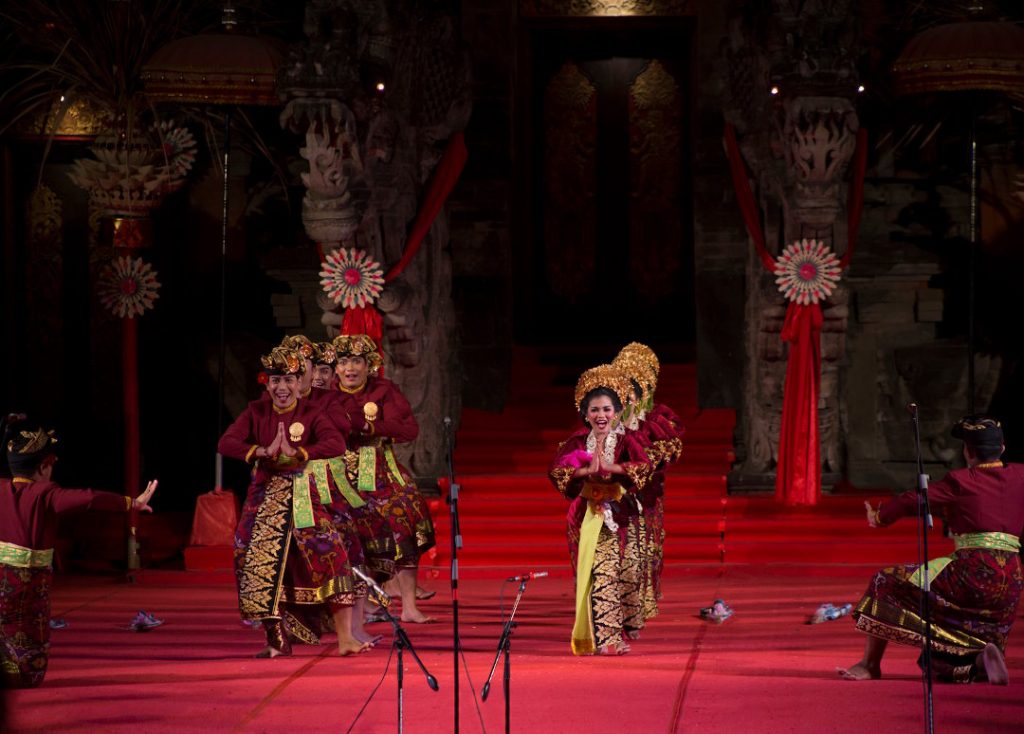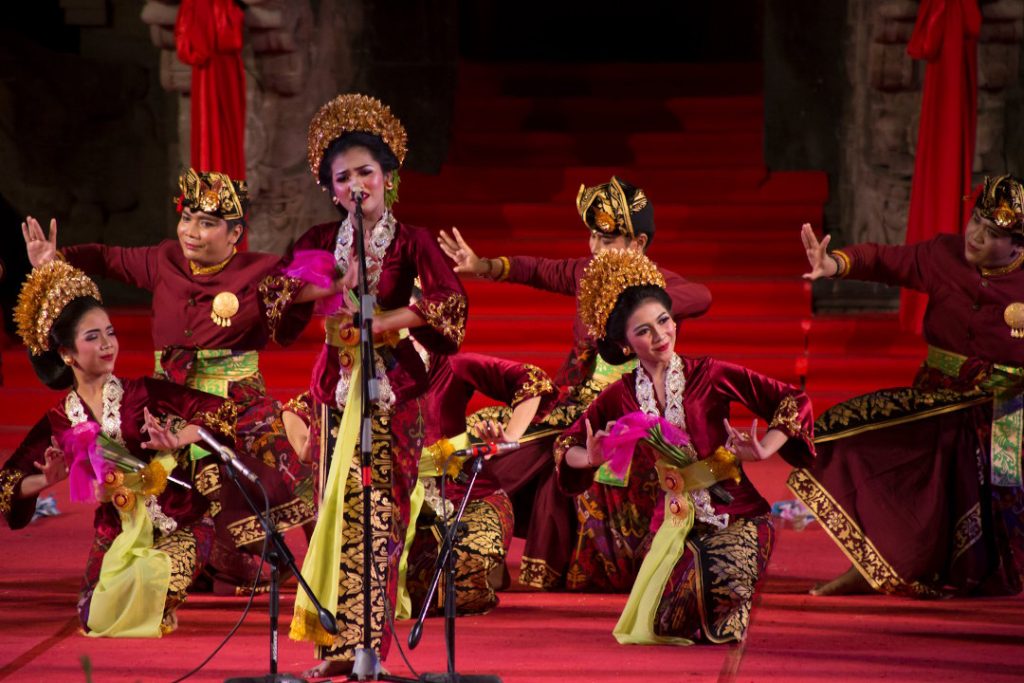A loud cheer erupted as the master of ceremony completed his introduction for the next performance. It was an exciting evening at the Bali Art Festival, as the dance troupe of Badung regency was in a final, head-to-head battle with the representatives of Jembrana regency.

A senior lady sat next to me, complementing the previous performance by Jembrana. She came all the way from Negara, Jembrana’s capital city four hours away from Denpasar, just to support the group.
Dedication aside, the Badung supporters outnumbered everyone, being much closer to the venue. The lady poked me and asked what dance was coming up next, I told her it was Sandya Gita Komaning Bayu. She nodded and placed her attention back to the stage as the lights shifted their gaze from the MC to the centre of the stage. There, already in formation, were the dancers. Gold flowers arranged into the shape of mountains were balancing on their heads, the strong posture of the female dancers keeping them still. Their costumes were a glaring red that shone under the beam stage lights.
The group consisted of both male and female artists. In fact, they are more than a dance group, they are better described as a choir who are able to dance.
Sandya Gita is a genre of Balinese performing art that combines the sound of the gamelan (traditional orchestra), kidung (a form of singing) and dance. The troupe was the Seka Gong Kebyar Manggeh Jayenggrat, performing a special composition by Desak Made Suarti Lakshmi and I Ketut Lanus.

A fast, immediate rhythm suddenly broke the silence; the melody of the gangsa (a metallophone) and the soft hollow sounds of the reong marking the beginning of the performance. Then enters the beautiful voice of the choir. Ni Luh Putu Astari, the dance choreographer created a simple and beautiful choreography for both male and female members of the choir. The dance routines matched perfectly, flowing together with the song and the sounds of the gamelan, arranged by four talented gamelan musician I Nyoman Wija Widastra, Wijil Akacangin, I Putu Yogi and I Kadek Sugiarta.
Like a lot of Balinese art, the Sandya Gita Kotamaning Bayu is inspired by Hindu belief and customs. This performance in particular tells the story of one of the five core elements that are the building blocks of life, known as the Panca Mahabutha. ‘Bayu’ is air, unseen, yet its existence is felt. The lyrics in the performance narrates the importance of air for all the living beings in the world. The dancers use a big fan to visualise the air and the wind.

Such special and rare performances are what make the Bali Art Festival popular among all culture lovers on the island. It will take place from 13 June – 11 July 2020.






